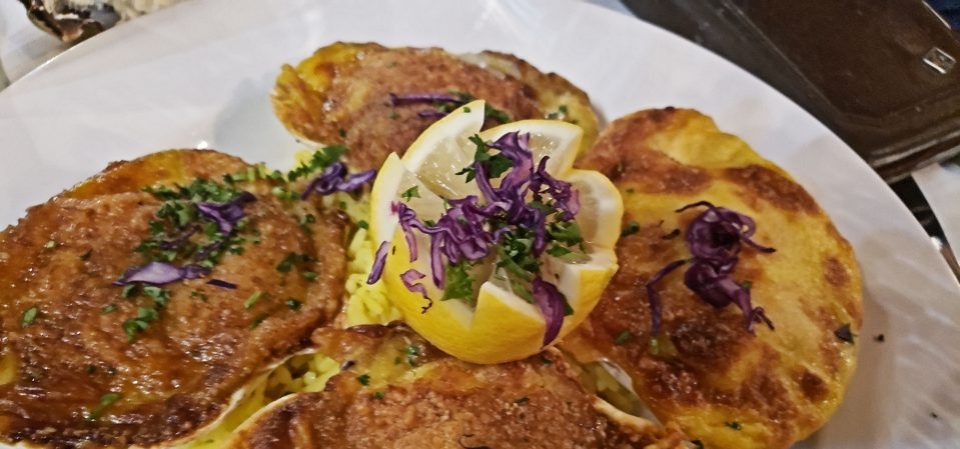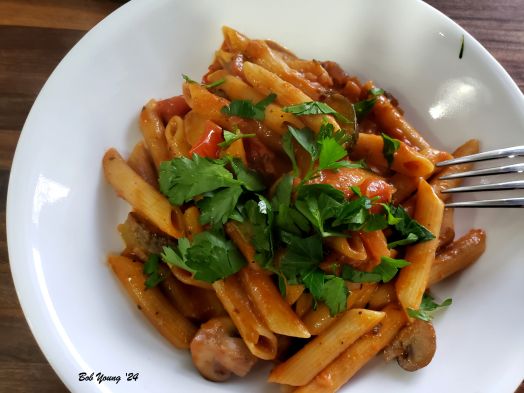 It’s probably one of the greatest cheddar cheeses you could EVER eat! And it’s a cheese in a can! Not aerosol driven. So it is not Cheeze Whiz. Nor is it Velveeta! It’s pure, fantastic, fresh cows milk cheese.
It’s probably one of the greatest cheddar cheeses you could EVER eat! And it’s a cheese in a can! Not aerosol driven. So it is not Cheeze Whiz. Nor is it Velveeta! It’s pure, fantastic, fresh cows milk cheese.
Corti Brothers Store, 5810 Folsom Blvd, Sacramento, CA 95819 916-736-3800, is probably one of the most fun grocery stores you will ever enter and they have some great information on this cheese! “…Frank Corti And Gino Corti started Corti Brothers in 1947…” and it has been open ever since. Darrell Corti, who Robin knows quite well and who I met several years ago, is the son of Frank Corti. From their website, Corti Brothers,
…Darrell, whose encyclopedic knowledge of food and wine attracts queries from around the world. As told by Ruth Reichel in her memoir Comfort Me With Apples, Colman Andrews described Darrell to her as the man “who knows more about food and wine than anyone else in the world.”
In 1967, using his role as an insider’s insider, he reached out to the rest of the country with a newsletter, featuring rare, high quality food items and wines discovered during his travels in Europe and Asia. After forty plus years of continuous publication, it is still prized for its wealth of information, including essential details about a product’s history, modes of production, uses, and occasional esoteric bits that ‘foodies’ adore. Never dull, Darrell is known for free expression of his wide ranging opinions, which are often iconoclastic and seldom sugar-coated.
Darrell’s contribution to the food and wine literacy of his friends, associates, and customers has been considerable. He played a large role in the development of wine production in Amador County. He was made a Cavaliere, the Italian equivalent of knighthood, by the Italian government for his efforts in promoting Italian products, not the least of which was the almost single-handed introduction of Aceto Balsamico Tradizionale to America. Darrell, an early champion of local olive production, has seen his efforts bear fruit as chairman of the Los Angeles County Fair’s International Extra Virgin Olive Oil Competition.
So when I say that Darrell Corti knows his cheeses and he likes to share his knowledge, here is what he says about Cougar Gold.
 “COUGAR GOLD CHEESE is the result of war! In fact it may the only good thing ever to have come out of war. During World War II, it was created by Washington State University to be used as military rations. It is the only cheese that I know of that is made and aged in a tin can. Normally, one does not think of cheese aged in a can, but Cougar Gold has become famous for this methodology. It is a “cheddar” like cheese that I think is possibly the best cheese to accompany wine. It has very low acidity, which does not change the taste of wine, and does have the clean sharpness of an aged cheese. Unique, it is made only at Pullman, Washington, and deserves to be better known.
“COUGAR GOLD CHEESE is the result of war! In fact it may the only good thing ever to have come out of war. During World War II, it was created by Washington State University to be used as military rations. It is the only cheese that I know of that is made and aged in a tin can. Normally, one does not think of cheese aged in a can, but Cougar Gold has become famous for this methodology. It is a “cheddar” like cheese that I think is possibly the best cheese to accompany wine. It has very low acidity, which does not change the taste of wine, and does have the clean sharpness of an aged cheese. Unique, it is made only at Pullman, Washington, and deserves to be better known.
It is also an easy to care for cheese. Just buy several tins and put them in your refrigerator and turn them from time to time. They just sit there getting better and better. It is also a cheese that is firm, with a crumbly texture, a pale yellow color and it will have specks of tyrosomine on it. Once the can is opened, wrap the cheese in waxed paper and then film and enjoy it until it’s gone. I think it is perfect with an old Cabernet or Vintage Port, perhaps not rich enough for Burgundy. If you like cheese and have not had Cougar Gold, you owe it to yourself to try it. It is hard to resist. By the way, when was the last time you had a 10 year old cheese? COUGAR GOLD CHEESE 30 oz tin.” [Corti Brothers website]
Here is what the WSU Creamery says about Cougar Gold.
“Our most famous & popular cheese! Winner of several national and international awards. A rich, white cheddar with a smooth, firm texture. This unique cheddar has a depth and intensity that most people have never before experienced. Its creamy, lingering flavor will leave you wanting for more! Our current stock of Cougar Gold is just over one year in age. Buy 2 and store one for aging, as it becomes more sharp and crumbly with age, developing crystals throughout, which can give it kind of a crunch…Purchasing cheese from the WSU Creamery helps support student employees of Washington State University by providing competitive wages and valuable work experiences…In May of 1992, the Creamery moved from its old home in Troy Hall to a fantastic and modern new location in the Food Quality Building. This new facility allows the Creamery to be at the forefront of research in cheese production. It allows WSU students to gain work experience directly applicable to the work they may be doing in the Food Science field upon graduating… A portion of the revenue from the sale of WSU Creamery products is used for educational support of Food Science students.”
You can purchase it from Corti Brothers, see the link above, or you can purchase it directly from the Washington State Creamery at WSU Creamery. We usually send some to our family and friends at Christmas. But be aware, they do run out of it and then you will have to wait until early Spring or so to get some. And it ages very well. WSU claims that one of their customers had a tin of Cougar Gold for 25 years! And when they opened it, it was awesome. Robin and I have 1 tin of Cougar Gold produced in 2009. All tins come date stamped and who produced it.






 Over the past several weeks, we have made some really good meals. Potato Latkes for one (
Over the past several weeks, we have made some really good meals. Potato Latkes for one (
















